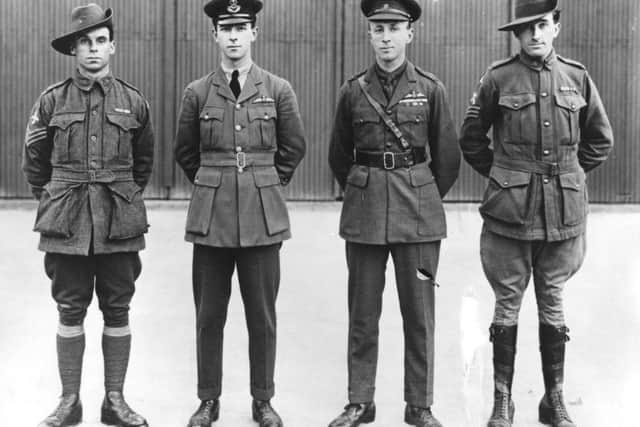To the ends of the earth: Scots brothers who ushered in era of global flight


Now, nearly a century after two Scots-Australians flew into the history books with one of the defining achievements of the interwar era, their exploits are being commemorated with a new exhibition.
Next month marks the centenary of brothers Ross and Keith Smith masterminding a gruelling, month-long air journey from London to Darwin.
Advertisement
Hide AdAdvertisement
Hide AdThe siblings, born to Scottish parents and partly educated at a boarding school in Moffat, claimed a prize of more than £5,000 after triumphing in the Great Air Race, a competition set up by Billy Hughes, the then prime minister of Australia.


Their success made headlines the world over, and saw the brothers knighted by King George V.
While their exploits are little known nowadays in Scotland, their adopted homeland is pulling out all the stops to celebrate the centenary of the successful landing on 10 December, 1919.
The State Library of South Australia has devoted a new exhibition to the Smiths, along with their mechanics, Wally Shiers and Jim Bennett, who accompanied them on the crossing in a modified Vickers Vimy bomber.
The Heroes of the Skies exhibition includes a logbook from the flight and notebooks kept by the Smiths, along with their pocket compass.
Geoff Strempel, director of the library, said: “We are proud to be a part of the celebrations of the epic flight centenary. This flight is considered one of the world’s great pioneering aviation feats and the story deserves to be told.”
For admirers of the brothers in Scotland, the renewed focus on their exploits is welcome, especially after a week in which an experimental research flight by Qantas set a world record after flying nonstop from London to Sydney.
The Borders-based historian and archivist, Fraser Simm, is among those who believe the Smiths helped usher in a new age of modernity, noting that their journey came a year after the end of the First World War, and just 16 years after the Wright brothers made the first powered flight.
Advertisement
Hide AdAdvertisement
Hide Ad“There can be no doubt that this, and the other pioneering journeys of 1919, ‘shrunk the world’ – there was no going back into a pre-flight world,” said Simm, the historian of George Heriot’s School in Edinburgh. “A tide of developments in technology, communications and travel was fast sweeping its way into people’s lives.”
Even so, in an era when aircraft technology was rudimentary at best, the challenge faced by the Smiths was formidable. Two others crews perished in their attempts, while another was imprisoned as suspected Bolsheviks in Yugoslavia.
For the brothers, both time-served pilots during the Great War, the 11,123-mile open cockpit flight was fraught with danger, with the freezing conditions torturing their bodies and icing up their goggles.
But they endured, and 28 days after leaving British shores, landed in Darwin on 10 December 1919.
A report in The Scotsman the following day paid them a handsome tribute.
“It is the romantic and the adventurous rather than the scientific or commercial side of Smith’s performance that will chiefly seize the public attention and imagination,” it stated. “A voyage of more than 11,000 miles through the air, on a line that reverses the flow of civilisation and religion from their primal homes in the remote East, appeals to the poetic sense and to the historic memory.”
The Smiths were knighted in 1920, but tragedy struck two years later when Ross and Bennett, his loyal mechanic, were killed while testing a new plane in Surrey.